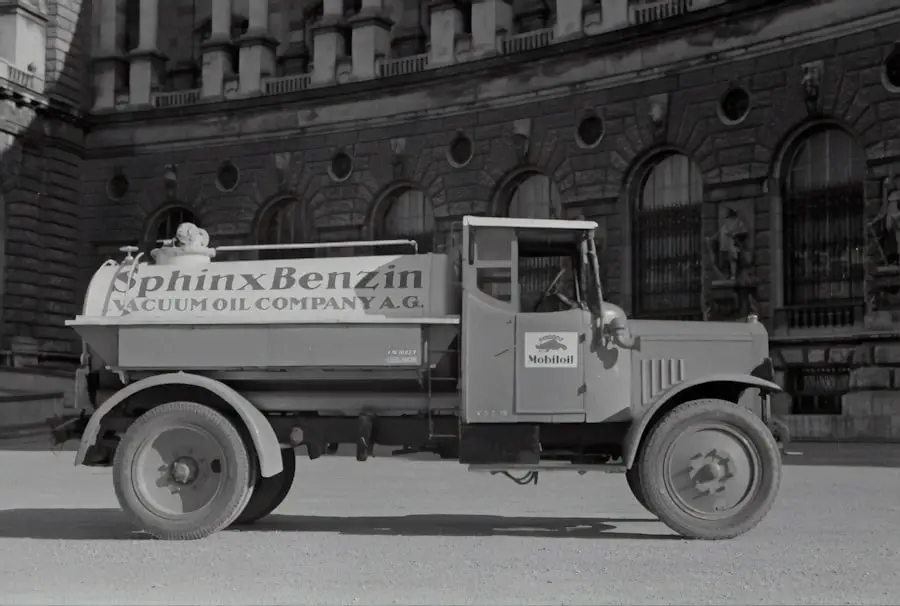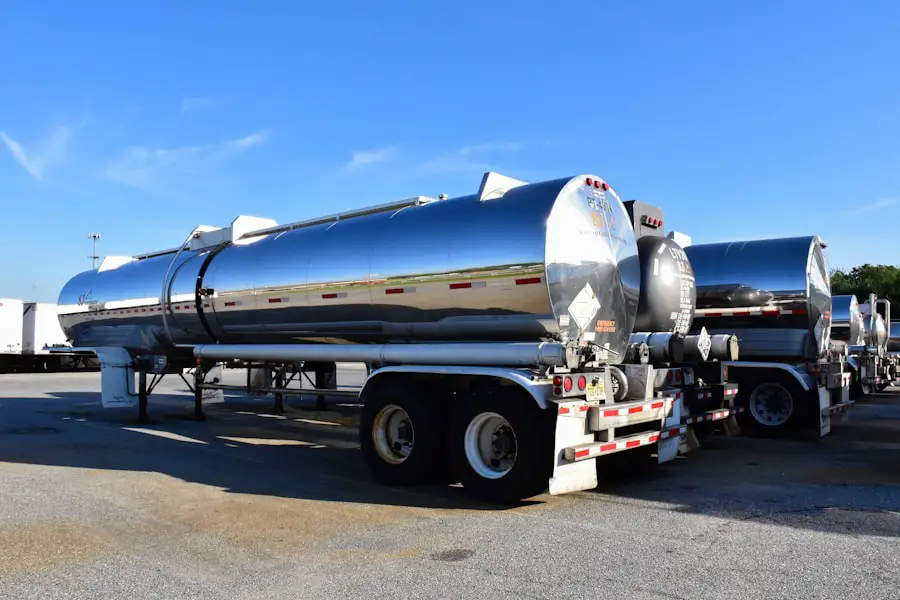The aviation kerosene market, primarily dominated by Jet A and Jet A-1 fuels, is a critical component of the global aviation industry. This market is influenced by various factors, including global oil prices, geopolitical events, and advancements in aviation technology. The demand for aviation kerosene is closely tied to the performance of the airline industry, which has seen fluctuations due to economic conditions, travel restrictions, and environmental regulations.
In recent years, the market has also been impacted by a growing emphasis on sustainability, leading to increased interest in alternative fuels and biofuels. In 2022, the global aviation fuel market was valued at approximately $200 billion, with projections indicating steady growth as air travel rebounds post-pandemic. The International Air Transport Association (IATA) has forecasted that global air passenger traffic will return to pre-pandemic levels by 2024, further driving demand for aviation kerosene.
Understanding these market dynamics is essential for any business looking to enter or expand within this sector. Companies must stay informed about trends such as the shift towards sustainable aviation fuels (SAFs) and the regulatory landscape that governs fuel specifications and emissions.
Key Takeaways
- Understanding the market for aviation kerosene is crucial for identifying potential buyers and developing a successful marketing strategy.
- Airlines and aviation companies are the primary potential buyers for aviation kerosene, and understanding their needs and requirements is essential for successful sales.
- Meeting regulatory requirements for selling aviation kerosene is a critical step in ensuring compliance and building trust with buyers and regulatory authorities.
- Developing a marketing strategy for aviation kerosene should focus on highlighting quality, safety standards, and competitive pricing to attract potential buyers.
- Negotiating contracts with airlines for aviation kerosene requires careful consideration of pricing, payment terms, and customer support to ensure long-term business relationships and growth.
Identifying Potential Buyers: Airlines and Aviation Companies
Identifying potential buyers in the aviation kerosene market primarily involves targeting airlines and aviation companies that operate commercial flights. Major airlines are often the largest consumers of aviation kerosene, with their fuel requirements dictated by fleet size, flight frequency, and operational routes. For instance, airlines like Delta Air Lines and American Airlines consume millions of gallons of aviation fuel annually, making them key players in the market.
Additionally, regional carriers and charter services also represent significant opportunities for suppliers, as they require consistent fuel supplies for their operations. Beyond airlines, other potential buyers include cargo carriers, private jet operators, and military aviation units. Cargo carriers such as FedEx and UPS have substantial fuel needs due to their extensive logistics networks.
Furthermore, private jet operators often seek high-quality aviation kerosene to ensure optimal performance for their clientele. Military contracts can also be lucrative, as defense forces require reliable fuel sources for their aircraft. Understanding the specific needs and purchasing behaviors of these various segments is crucial for effectively targeting potential buyers and tailoring offerings to meet their requirements.
Meeting Regulatory Requirements for Selling Aviation Kerosene

Navigating the regulatory landscape is a fundamental aspect of selling aviation kerosene. The aviation fuel industry is subject to stringent regulations imposed by national and international bodies, including the Federal Aviation Administration (FAA) in the United States and the International Civil Aviation Organization (ICAO). These regulations govern fuel specifications, safety standards, and environmental compliance.
Suppliers must ensure that their products meet the required specifications for performance and safety, which often involves rigorous testing and certification processes. In addition to product specifications, suppliers must also comply with regulations related to storage, transportation, and distribution of aviation kerosene. This includes adhering to safety protocols to prevent spills and accidents during handling.
Environmental regulations are increasingly important as well; suppliers must be aware of emissions standards and any initiatives aimed at reducing the carbon footprint of aviation fuels. Engaging with regulatory bodies and staying updated on changes in legislation is essential for maintaining compliance and avoiding potential legal issues.
Developing a Marketing Strategy for Aviation Kerosene
| Metrics | 2019 | 2020 | 2021 |
|---|---|---|---|
| Market Share (%) | 25 | 28 | 30 |
| Revenue (in millions) | 150 | 175 | 200 |
| Customer Satisfaction (out of 10) | 7.5 | 8 | 8.5 |
| Marketing Budget (in thousands) | 1000 | 1200 | 1500 |
Creating an effective marketing strategy for aviation kerosene requires a deep understanding of the target market and its unique characteristics. A successful approach often involves a combination of direct marketing efforts, participation in industry events, and building relationships with key stakeholders in the aviation sector. Direct marketing can include outreach to airline procurement departments, highlighting the benefits of your product in terms of quality, reliability, and pricing.
Participation in industry conferences and trade shows can also be instrumental in establishing brand presence and networking with potential buyers. Events such as the International Air Transport Association (IATA) Annual General Meeting provide opportunities to showcase products and engage with decision-makers from airlines around the world. Additionally, leveraging digital marketing strategies—such as targeted online advertising and content marketing—can help reach a broader audience while establishing thought leadership in the industry.
Negotiating Contracts with Airlines for Aviation Kerosene
Negotiating contracts with airlines is a critical step in securing long-term relationships and ensuring consistent sales of aviation kerosene. The negotiation process typically involves discussions around pricing, delivery schedules, payment terms, and quality assurances. It is essential to approach these negotiations with a clear understanding of market rates and competitor offerings to position your product effectively.
Airlines often seek favorable terms that allow them to manage their operational costs while ensuring a reliable supply of fuel. This may involve negotiating bulk purchase agreements or long-term contracts that provide price stability over time. Additionally, offering flexible payment options can be an attractive proposition for airlines looking to optimize their cash flow.
Building trust through transparent communication and demonstrating a commitment to quality can significantly enhance the likelihood of successful contract negotiations.
Setting Up a Distribution Network for Aviation Kerosene

Establishing a robust distribution network is vital for ensuring timely delivery of aviation kerosene to customers. This network typically involves partnerships with logistics companies that specialize in fuel transportation and storage. Suppliers must consider factors such as geographic coverage, transportation modes (pipeline, tanker trucks), and storage facilities when designing their distribution strategy.
Strategically located storage facilities near major airports can enhance efficiency by reducing transportation times and costs. Additionally, implementing advanced logistics management systems can help track inventory levels, monitor delivery schedules, and optimize routes for fuel distribution. Collaborating with experienced logistics partners who understand the complexities of aviation fuel distribution can further streamline operations and improve service reliability.
Ensuring Quality Control and Safety Standards for Aviation Kerosene
Quality control is paramount in the aviation kerosene market due to the critical role that fuel plays in aircraft performance and safety. Suppliers must implement rigorous quality assurance processes to ensure that their products meet or exceed industry standards. This often involves conducting regular testing of fuel samples for contaminants, ensuring proper storage conditions, and adhering to specifications set forth by regulatory bodies.
Safety standards are equally important; suppliers must prioritize safety protocols throughout the supply chain to mitigate risks associated with handling and transporting aviation kerosene. This includes training personnel on safe handling practices, conducting regular safety audits, and maintaining compliance with environmental regulations. By fostering a culture of safety and quality within the organization, suppliers can build trust with customers while minimizing the risk of incidents that could damage their reputation.
Managing Inventory and Storage of Aviation Kerosene
Effective inventory management is crucial for maintaining a steady supply of aviation kerosene while minimizing costs associated with excess stock or shortages. Suppliers must implement inventory tracking systems that provide real-time visibility into stock levels across various storage locations. This allows for better forecasting of demand based on historical usage patterns and seasonal fluctuations in air travel.
Storage facilities must be designed to meet safety standards while optimizing space utilization. Properly maintained tanks equipped with monitoring systems can help prevent leaks or contamination while ensuring compliance with environmental regulations. Additionally, establishing relationships with third-party storage providers can offer flexibility in managing inventory without incurring significant capital expenditures on infrastructure.
Pricing and Payment Terms for Aviation Kerosene Sales
Pricing strategies for aviation kerosene sales must consider various factors including market conditions, production costs, and competitor pricing. Suppliers often adopt dynamic pricing models that adjust based on fluctuations in crude oil prices or changes in demand from airlines. Offering competitive pricing while maintaining profitability is essential; therefore, conducting regular market analysis can help suppliers stay informed about pricing trends.
Payment terms are another critical aspect of pricing negotiations with airlines. Many airlines prefer flexible payment options that align with their cash flow cycles; offering terms such as net 30 or net 60 days can make your proposal more attractive. Additionally, providing discounts for bulk purchases or long-term contracts can incentivize airlines to commit to larger volumes or extended agreements.
Providing Customer Support and After-Sales Service for Airlines
Customer support plays a vital role in building long-term relationships with airlines purchasing aviation kerosene. Establishing a dedicated customer service team that understands the unique needs of airline clients can enhance satisfaction levels significantly. This team should be equipped to handle inquiries related to fuel specifications, delivery schedules, or any issues that may arise during the supply process.
After-sales service is equally important; suppliers should proactively engage with clients post-purchase to ensure they are satisfied with the product quality and service received. Regular follow-ups can help identify areas for improvement while demonstrating a commitment to customer success. Providing training or resources on best practices for fuel management can further solidify relationships with airline clients.
Expanding and Growing Your Aviation Kerosene Business
To expand within the aviation kerosene market, businesses must adopt a strategic approach that focuses on both organic growth and potential acquisitions or partnerships. Exploring new geographic markets can provide opportunities for increased sales; this may involve entering emerging markets where air travel is on the rise or expanding into regions where existing competitors are less established. Innovation also plays a crucial role in growth; investing in research and development can lead to advancements in fuel technology or alternative fuels that align with sustainability goals within the industry.
Collaborating with research institutions or participating in industry initiatives focused on sustainable aviation fuels can position your business as a leader in this evolving landscape. By continuously adapting to market changes and seeking new opportunities for growth, suppliers can secure their place in the competitive aviation kerosene market while contributing positively to environmental goals.
If you are looking to sell aviation kerosene to airlines, you may also be interested in learning about the latest trends in travel accessories. Check out this article on 5 Must-Have Softside Carry-On Luggage with Wheels for Spring 2025 to stay updated on what travelers are looking for in their luggage. Understanding the needs and preferences of airlines and passengers can help you tailor your sales pitch and offerings to better meet their demands.
FAQs
What is aviation kerosene?
Aviation kerosene, also known as Jet A-1, is a type of fuel specifically designed for use in aircraft. It is a clear, colorless liquid with a flash point above 38°C (100°F) and a freeze point maximum of -47°C (-53°F).
How is aviation kerosene different from other types of kerosene?
Aviation kerosene is different from other types of kerosene, such as heating kerosene, in that it has a higher flash point and a lower freezing point, making it suitable for use in aircraft at high altitudes and low temperatures.
What are the requirements for selling aviation kerosene to airlines?
Selling aviation kerosene to airlines requires compliance with industry regulations and standards, including quality control, safety, and environmental regulations. Suppliers must also have the necessary infrastructure and logistics to deliver the fuel to airports.
How can I become a supplier of aviation kerosene to airlines?
Becoming a supplier of aviation kerosene to airlines typically involves obtaining the necessary licenses and certifications, establishing relationships with airlines and airports, and ensuring the ability to meet the demand for the fuel.
What are the key considerations for selling aviation kerosene to airlines?
Key considerations for selling aviation kerosene to airlines include understanding the specific needs and requirements of the airlines, ensuring consistent and reliable supply, and maintaining high standards of quality and safety.
What are the potential challenges of selling aviation kerosene to airlines?
Challenges of selling aviation kerosene to airlines may include fluctuating fuel prices, regulatory changes, competition from other suppliers, and logistical complexities associated with fuel transportation and delivery.
